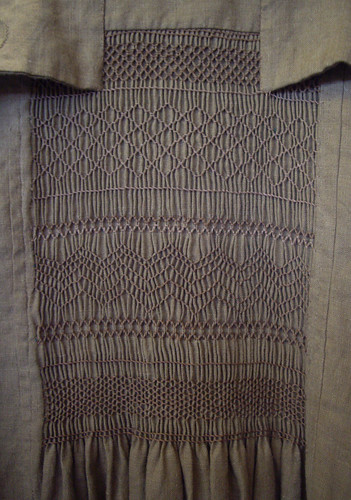This is what I’m wearing today – a smocked and embroidered shirt.
It started life one of Paul’s old work shirts. It’s in perfectly good condition, it just doesn’t fit him any more. So I’ve smocked the sleeves and a bit on the back, and embroidered the button stand and collar.
I did this to see whether it would work as a project that could be taught in a workshop – how to revamp an old shirt with some simple decorative needlework. Unfortunately this was such a nuisance to make that I think the answer is no! There’s a reason why the smocking and embroidery is always done before you assemble your garment – it’s much too fiddly to try and do it afterwards.
On the plus side, I’ve gained a pretty addition to my wardrobe, and have every intention of wearing this with my huge floppy trousers. Also, it tells me that smocked and embroidered shirts made from scratch are definitely in my sewing future!



